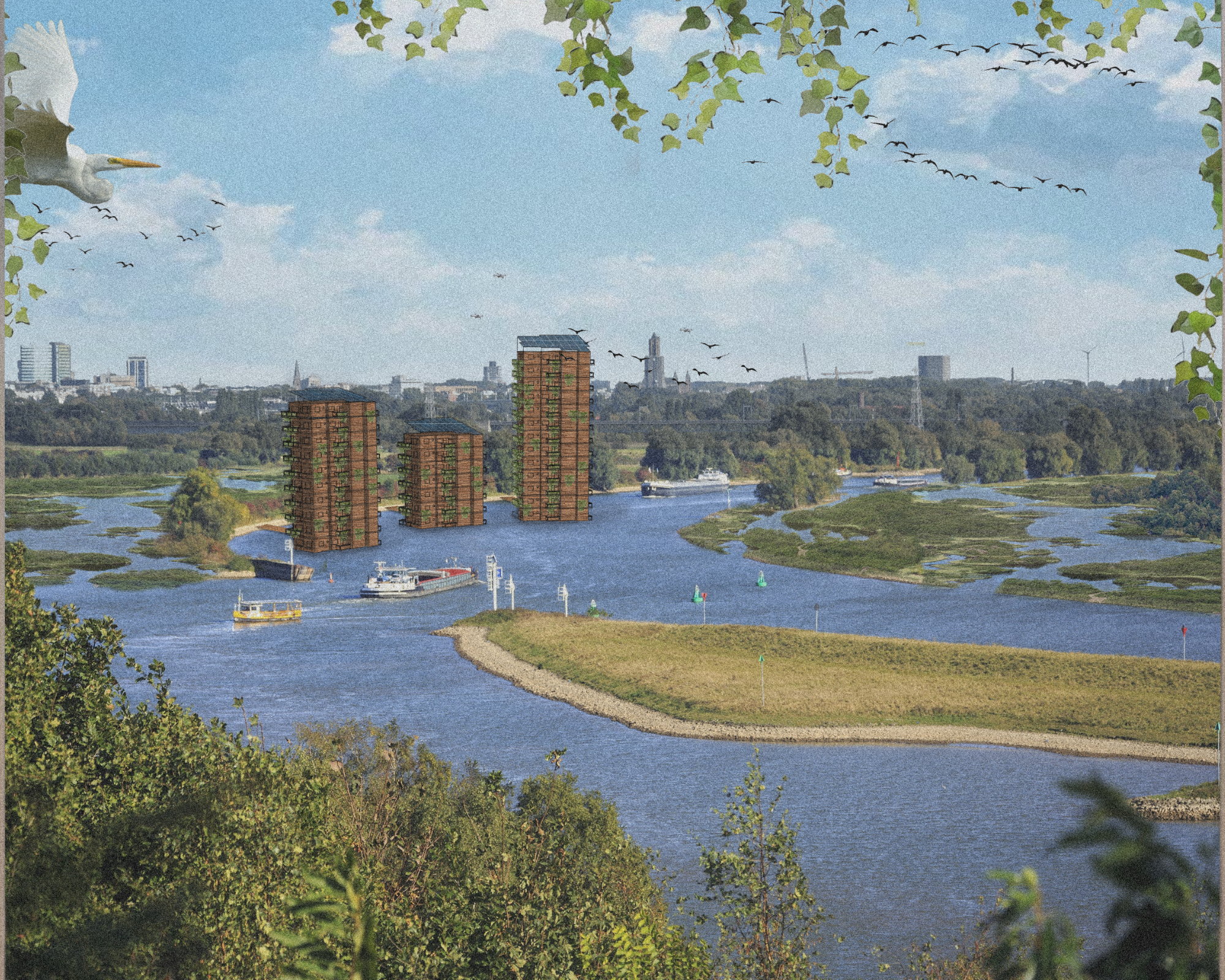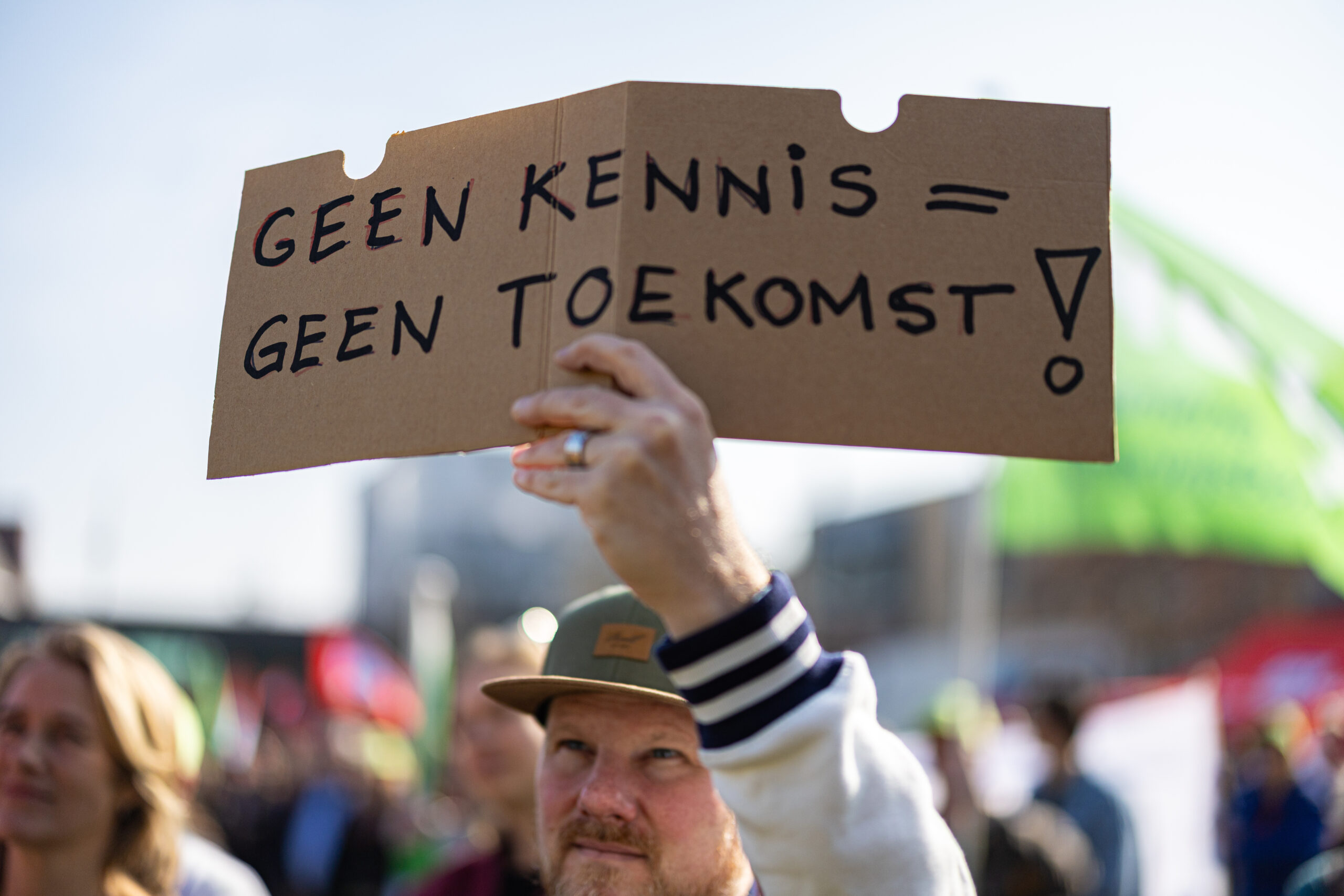After the map of the green Netherlands in 2120, Wageningen scientists now also know what a city in 2120 may look like, using Arnhem as a concrete example.
Floating, wooden residential towers, ventilation corridors to provide the inner city with a cooling breeze, water-powered energy through a system of subterranean tubes and ponds on the Veluwe: The Wageningen perspective on 22nd century Arnhem (links to Dutch content) contains a plethora of fantastical amenities. And that is precisely the intent, says Ilse Voskamp, a researcher at Wageningen Environmental research. ‘There are abundant nightmare scenarios for the future. This exploration shows that a positive outlook is also possible, provided the Netherlands acts in a timely manner. If we want, we could be well underway towards a future scenario such as this one within half a century. But, to achieve that, governments and administrators must jump into action rather than wait for several more years.’
Inspired by nature
Choosing Arnhem as the setting for an urban future perspective is no coincidence. The city is located in the middle of two important Dutch landscapes: the river area and higher sandy soils. ‘The idea is based on the existing natural system as the main element, on which the choices we make for urban development are based’, Voskamp clarifies. The principles may be copied for other locations with similar natural contexts. This perspective offers leads for cities on lower territories such as the Randstad and higher and drier cities such as Nijmegen and Apeldoorn.
The perspective does not take into account any sacred cows. The high rise construction and wind turbines on the Veluwe may well raise some eyebrows. These perspectives are not designed to provoke, Voskamp explains. ‘They illustrate “systems thinking”. Combine the potential this landscape offers with climate change, and constructing on higher ground and generating energy in windy areas is a logical choice.’
Integrated solutions
The study ‘The city of 2120: Naturally!’ offers solutions to six issues: living, water management, urban climate, energy, mobility and, biodiversity & agriculture. They were created through a collaboration between Wageningen Environmental Research and the Landscape Architecture group. Voskamp is enthusiastic about the crossover: ‘Collaborating in a multidisciplinary team yields an integrated perspective. Aspects emerged that I had barely considered. For example, the insight that less tarmac will be needed one hundred years from now as transportation will take place through self-driving cars and drones. That offers opportunities for completely different use of space.’
Societal debate
Arnhem’s alderman for climate Cathelijne Bouwkamp is to receive a copy of ‘The city of 2120: Naturally!’, from programme leader Tim van Hattum and researcher Voskamp. She hopes it will fuel a societal debate as an accelerator for plan development. ‘On where we are headed with our cities, and how we can start to shape them now.’

 Both the river and the relief around the city are leading for the future of Arnhem. Image WUR.
Both the river and the relief around the city are leading for the future of Arnhem. Image WUR. 

